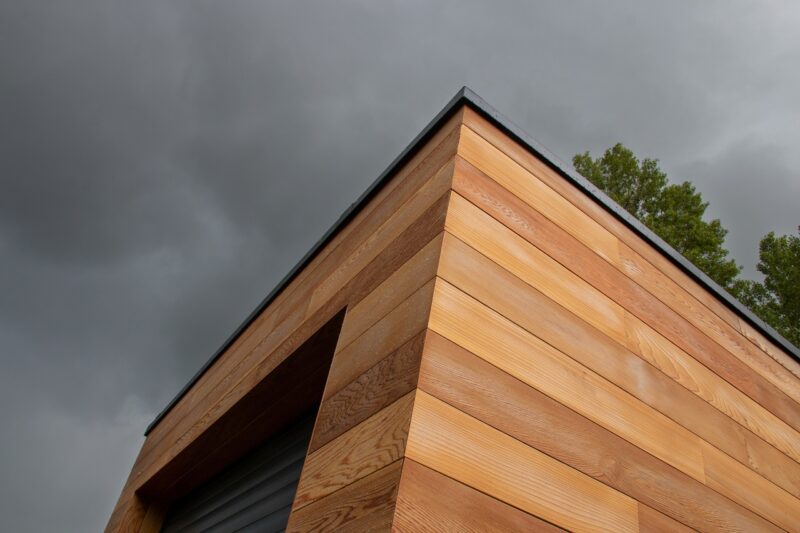Published: 22/04/24 By: Mike Bekin
Cedar has earned itself a big name in the cladding world. Durable, versatile and readily available, it is a reliable choice for upgrading your exteriors. But with two different types to pick from at EcoChoice – both British and Canadian – it can be tricky to know which is the right choice for your project.
To help clear things up, our experts have put together a no-nonsense guide to Cedar cladding.
British Cedar Cladding
British Cedar timber is grown locally here in the UK, which is enough to win over a lot of our clients. As British, it gains sustainability points as it does not have to be sourced overseas, it is also quicker growing than other timbers and is often considered the most eco-friendly choice for British projects.
One of the biggest differences between the two Cedar options (aside from geographics) is their colour. British Cedar has a paler hue, with pink to amber, creamy overtones and tight, dark knots.
Canadian Cedar Cladding
Like its British cousin, Canadian Cedar is classed as a Western Red Cedar. It is native to British Columbia and is world-renowned for its excellent performance in harsh, outdoor environments. Of course, it does have to be shipped from Canada, which makes it a little harder to come by and has a higher carbon footprint but as a timber, it is still a renewable resource which, thanks to its carbon sequestration properties, adds plenty of eco-friendly appeal to your cladding.
Canadian Cedar is a little darker than British Cedar cladding, with some boards leaning towards a reddy-brown hue and others a darker amber.
Which Should You Choose?
Aside from appearance and sustainability, what else is there to consider when choosing between British and Canadian Cedar cladding?
It is important to note that Canadian Cedar is considered more durable and more beautiful than British Cedar, with strong and hard-wearing characteristics which make it ideal for exterior applications. It also has considerably fewer knots and defects than its fast-grown British counterpart. While British Cedar is still well-suited to outdoor uses, with excellent resistance to rot and other external threats, it may need a little more maintenance in order to last for the same number of years (which should be decades, with the right care).
But British Cedar excels where budget is concerned. It is more affordable than Canadian Cedar, making it a cost-effective choice for timber cladding. If supporting local industries is a top priority for your project, this is also a great opportunity to stick to your values, with our British Cedar at EcoChoice locally sourced from sustainable, responsibly managed woodlands.
Order Cedar Cladding
Whether you choose British Cedar cladding or Canadian Cedar cladding, you can find what you are looking for at EcoChoice. With a wide range of sustainable timbers from independently certified forests, we can help ensure you get the best materials for your project.
To learn more about the species on offer or to begin an order for Cedar cladding, get in touch with us today.
Tags: cedar cladding
Categories: Insights
